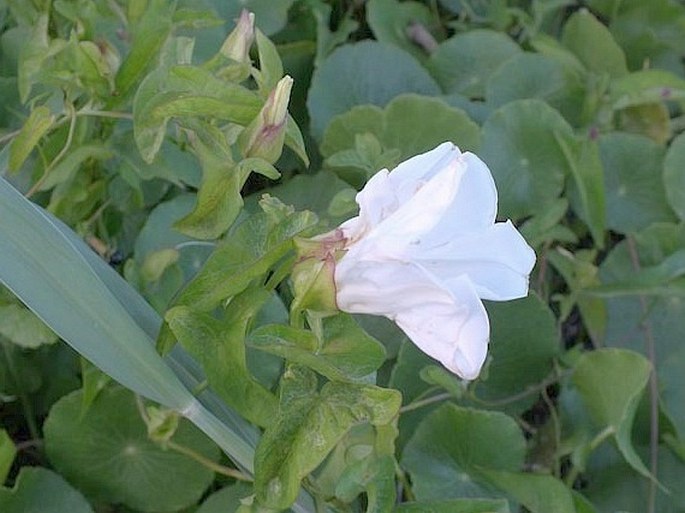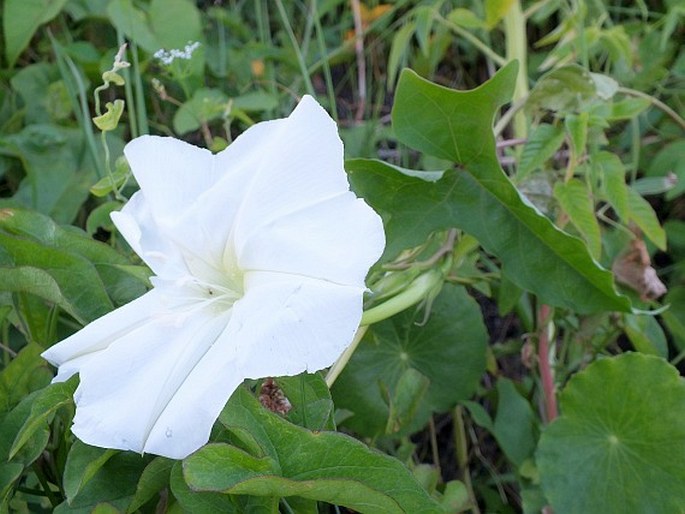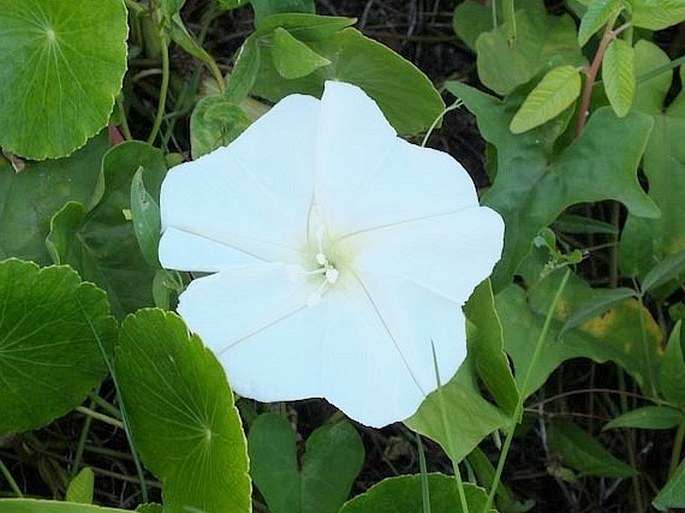Syn.: Calonyction aculeatum (L.) House, Calonyction album (L.) House, Calonyction bona-nox (L.) Bojer, Calonyction pulcherrimum Parodi, Calonyction speciosum Choisy, Convolvulus aculeatus L., Convolvulus bona-nox (L.) Spreng., Convolvulus pulcherrimus Vell., Ipomoea bona-nox L.
Family: Convolvulaceae Juss.

Distribution: Coastal areas of Florida, Louisiana and Texas, across Mexico, Caribbean, all Central America, Colombia, Venezuela, Brazil and northern Argentina. Found in cultivation which it escapes frequently and secondarily occurring in southern China, Thailand, Indonesia, southern Japan, New Guinea, Philippines, Sri Lanka and even on Pacific islands.
Ecology: Found in moist forests, along water courses, disturbed areas and beaches. Blooms during all seasons.

Description: Annual or perennial vine, sprawling along ground or climbing trees or any supports, stems up to 10 m long, hairless, climbing stems have numerous projections for support. Leaves alternate, 10–20 × 5–16 cm, petioles 5–18 cm long, blades ovoid, margins smooth, or 3-lobed with pointy tips. Inflorescence one or more-flowered, peduncles 1–24 cm long, bracts, small, short lasting; flowers fragrant, from leaf axils, opening in the evening and withering in the morning (hence moonflower), trumpet-shaped, long and narrow, greenish-white floral tube, 7–15 cm long, 5 large white spreading lobes 10–15 cm wide, sepals 5–20 mm long, elliptic to ovoid; 5 stamens and 1 style extending from the flower tube. Fruit is a capsule, ovoid with pointed tip, 2.5–3 cm long, brown to black; seeds 4, whitish colour, hairless, 10 mm.



These images were taken in USA, Louisiana, Grand Isle (May 2014).


